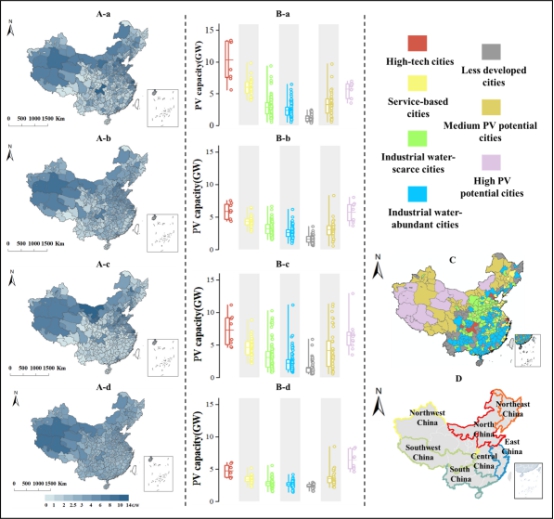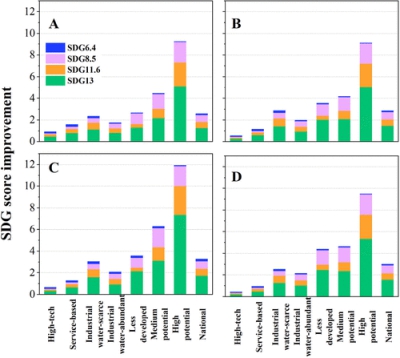The Institute of Blue and Green Development at Shandong University (Weihai), in collaboration with the University of Maryland, has recently made significant progress in understanding the impact of photovoltaic (PV) deployment on sustainable development. The paper titled "Promoting sustainable development goals by optimizing city-level solar photovoltaic deployment in China" has been published in Environmental Science & Technology. The first author of the paper is Professor Jiashuo Li, with Professor Xi Liu from Shandong University and Professor Kuishuang Feng from the University of Maryland as corresponding authors.
PV installations, which enable carbon neutrality, are expected to surge in the coming decades. This growth will support sustainable development goals (SDGs) via reductions in power-generation-related environmental emissions and water consumption while generating new jobs. However, where and to what extent PVs should be utilized to support SDGs must be thoroughly addressed. In this study, multiple PV deployment scenarios were analyzed to compare the benefits of PVs and related SDGs progress in 366 prefectural-level cities in China. An assessment framework was developed that integrates a PV allocation model, an electricity system optimization model, and a benefit assessment approach. This research identifies vast differences in PV distribution and electricity transmission and elucidate trade-offs and synergies among the SDGs under various PV implementation scenarios. The water conservation-oriented scenario yields substantial carbon reduction, air pollutant mitigation, and water saving cobenefits, leading to the greatest SDGs improvements. Prioritizing employment creation enhances job-relevant SDGs but inhibits environmental resource benefits. SDGs in less developed cities present greater progress across all scenarios. This study highlights the need to consider spatial heterogeneity and the potential trade-offs between different SDGs and regions when designing energy transition strategies.

Figure 1: City-Scale PV deployment under Different Scenarios: (A) Total PV installed capacity by city (A) or seven groups (B) for four scenarios: (A-a) or (B-a) carbon reduction-oriented scenario; (A-b) or (B-b) air quality-oriented scenario; (A-c) or (B-c) water-conservation-oriented scenario; (A-d) or (B-d) employment creation-oriented scenario. (C) Spatial distribution of the seven city groups. (D) Regional grid classification.

Figure 2: Mean Values of Normalized SDG Score Improvement at the City and National Levels under Four Scenarios: (A) Carbon reduction-oriented scenario; (B) Air quality-oriented scenario; (C) Water conservation-oriented scenario; (D) Employment creation-oriented scenario.
Original article link: https://pubs.acs.org/doi/10.1021/acs.est.3c09263
